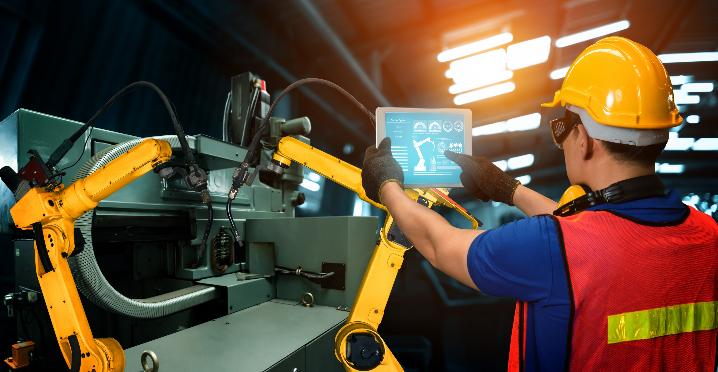The idea of a robot undoubtedly evokes futuristic and modern-day images. It gives the impression of a sort of revolutionary advancement – an idealistic and visionary goal imagined decades and centuries before.
From the early days of Leonardo da Vinci and Jacques de Vaucanson, the sparks of inspiration towards robotics had already been ignited. These pioneers creatively designed functional robots that served to entertain and amaze; Leonardo da Vinci created robotic vehicles and the first humanoid robot, while Jacques de Vaucanson created a human-shaped machine that simulated how a normal human would breathe to play the flute.
Evidently, robots have existed way before we – including our (great-)great-grandparents – have. In fact, these robots can be argued to have inspired the genesis of technological development, introducing artificial intelligence robotics.
So… What is a Robot?

The Bridge to Artificial Intelligence
Artificial Intelligence is frequently connected with robotic technology to create smart machines. Between the gap of non-intelligent, repetitive work and intelligent problem-solving methodologies, the combination of artificial intelligence and robotic technology enables greater connectivity and productivity in human life. In a way, artificial intelligence functions like a brain that sends a coded message to the body, the robot, who carries out the task.
Unlike robots, artificial intelligence can learn and adapt their behavior based on the feedback gained from the environment without human intervention. For example, on its own, the artificial intelligence powered algorithm eventually becomes accustomed to human behavior and curates personalized content for the user. When artificial intelligence is powered through robots, the cameras and sensors (for example) imbue the robot with intelligence, enabling it with “sight” to detect and discern their surroundings, determining the placement of objects and the next step of action. This is indicative of an artificially intelligent robot, which then performs more complex tasks.
Other more complicated activities include software face recognition software, or a complicated scheduling software installed in a machine.
Going Further with Robots and Artificial Intelligence
Unfortunately, while robots can mimic human behavior, robots cannot fully cultivate the same senses as human beings such as listening to their instincts and proprioception (self-awareness – the ability to perceive one’s body in space). Other than creating robots with chemical sensors to function like a sensible human, it is immensely difficult to equip robots with an existential and instinctual sense of self.
With machine-learning and artificial intelligence algorithms, creating smarter and more human-like robots is becoming a possible reality. Sensors specifically programmed to understand the signals of touch and pressure, obtaining data for further interpretation. Even more, the robot – with machine-learning and artificial intelligence – can use previous data by extrapolating information and strategize their future movements. This creates more self-awareness for the robot in understanding their own movements, and finally, to render an optimal step.
Ultimately, artificial intelligence has helped robotic technology take a leap – which is what we know as modern robotics today. Robots, in the past, are unintelligent machines that work repetitively and independently. Now, robots have grown to function more similarly to the way humans do. The future of robotic technology may only advance further from here.
If you need more information regarding robotics or AI, please contact us.